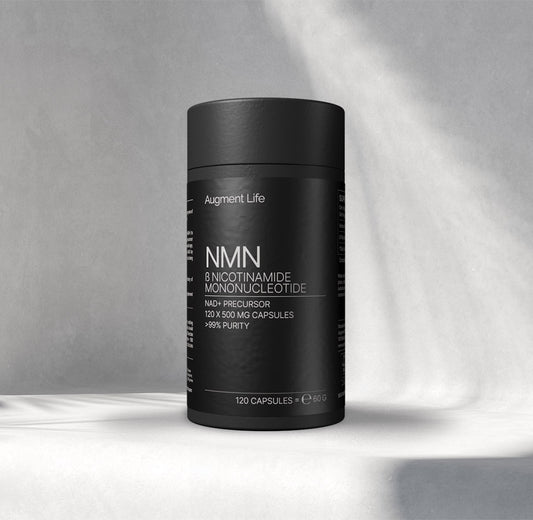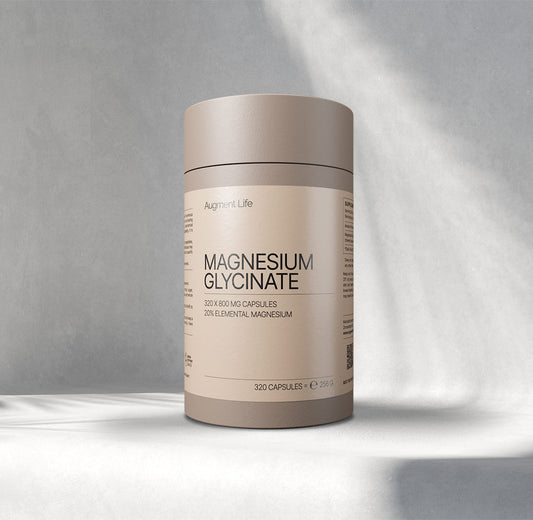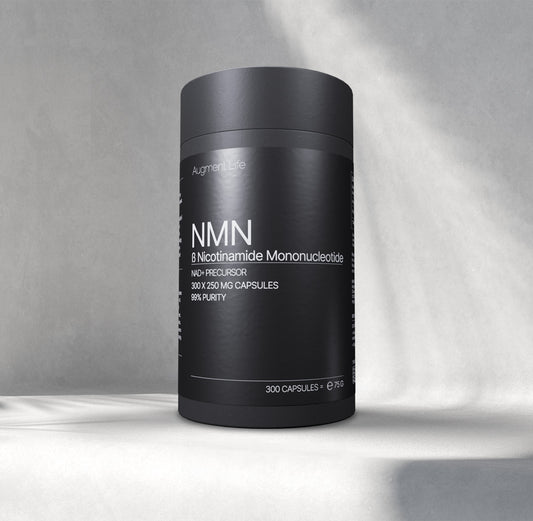Understanding Why We Need Collagen
In order to understand how collagen can improve our skin health, we first need to understand just a little science about our body's connective tissue.
According to the NIH, connective tissue “supports, protects, and gives structure to other tissues and organs in the body. Connective tissue also stores fat, helps move nutrients and other substances between tissue and organs, and helps repair damaged tissue. Connective tissue is made up of cells, fibers, and gel-like substances. Types of connective tissue include bone, cartilage, fat, blood, and lymphatic tissue.”1
Connective tissue is, therefore, literally found everywhere in the body, due to its structural importance.
We are focused in this article on the outer connective tissue that we can see via the skin. However, it is important to remember that there's also connective tissues inside your blood vessels, your ligaments, your bones and even your nervous system.
Collagen is the central component of connective tissue and provides many of its elastic qualities, and this is primarily composed of the non-essential amino acids glycine, proline, alanine, hydroxyproline and glutamic acid.3
The cells that make the types of connective tissues we are most interested in are called fibroblasts and chondrocytes, and we can think of these like a 3D printer that makes bricks to build a house, or in our case, makes collagen to repair our connective tissue, which is our scaffolding that holds everything together.2
Now, while you might think there's no point supplementing with glycine and proline rich collagen proteins since they’re non-essential, our bodies in fact prefer to get most of them from our diet, as synthesizing nutrients, especially macronutrients, is metabolically costly, and collagen is the most abundant protein in the body.4 5 8
Additionally, our bodies are able to synthesize less amino acids as we age, so our needs increase over time, as well as during certain conditions such as injury, when the body has to repair itself rapidly. 6
In fact, we have only recently learned that, much like muscle protein synthesis, which is switched on by the ingestion of a large amount of essential amino acids like leucine, connective protein synthesis is also stimulated by a large simultaneous intake of glycine and proline, which would equate to something like 20-30 grams of hydrolyzed collagen or gelatin.7
Collagen Digestion, and Vegan Diets
However it's important to note that whole, or native collagen, which contains many peptides composed of chains of amino acids, is very resistant to peptide cleavage by digestive enzymes, resulting in poor absorption, therefore it's important to use hydrolysed collagen or gelatin, which are better absorbed.8
It's also important to note that plants do not make connective tissues or collagen, and therefore while they do contain some glycine and proline, they are nutritionally much poorer sources.9 10
For example, if you ate 100 grams of tofu, you’d get 1.8 grams of glycine and 2.8 grams of proline, while pumpkin seeds yield 2.4 grams of glycine and 1.3 grams of proline, meaning you’d need to eat about 200-300 grams of tofu, or 300-400 grams of pumpkin seeds to equate with 1 large scoop of collagen or gelatin, which provides 6-8 grams glycine and 3-4 grams proline.10
Collagen and Skin Health
The skin, which is 70-80% collagen and comprises much connective tissue, like most connective tissues in the body, is constantly growing new cells and remodeling.2 11
Over time, we can even watch old scars gradually reduce in size and fade, if we have sufficient amino acids and micro nutrients for this to occur, though sadly, this process slows with age, and is adversely impacted by poor nutrition, chemical exposure, smoking, and excessive UV light.11 12 13 14
However, there is no direct blood supply to the outer epidermis layer, which is what we see visually, and therefore nutrients are received via diffusion from the inner dermis layer. Unfortunately, this does not mean the collagen, or its constituent amino acids, are able to be “absorbed” when applied topically.16
Thankfully, increasing research is showing the benefits of collagen supplement for skin health, especially when paired with other micronutrients, such as vitamin C, which we’ll discuss shortly.
In fact, when available in sufficient proportions, the amino acids derived from hydrolyzed collagen ingestion stimulate the formation of internal collagen and elastin, as well as hyaluronic acid.17
This was verified by a recent 2021 systematic review and meta-analysis of hydrolyzed collagen supplements on skin aging, which revealed that hydrolysed collagen can “delay and improve signs of skin aging by decreasing facial wrinkles and improving skin hydration and elasticity” within 90 days of regular ingestion.18
Micronutrients for Skin Health
So, now that we know the importance of collagen, how can we augment its benefits on our connective tissues, including the skin?
Well perhaps the easiest, most efficient way is to ensure we are acquiring optimal micronutrients from our diet.
First is vitamin C which is necessary for strong connective tissues, and this is why a deficiency, known as scurvy, results very early on in bleeding gums and slower healing wounds. Another indirect way that vitamin C can support connective tissues is by helping the immune system to fight viruses, which are known to secrete virulence factors which destroy collagen or impair its production.15 20
Vitamin C is easy to get from the diet via fresh fruits and vegetables, but be sure they are raw, because heat denatures vitamin C.19 20
Equally important is vitamin A, or retinol, which according to the NIH is important for vision, immune function, reproduction, and what we are interested in here, growth and development due to its necessity in cell division. Indeed it is well established that retinol deficiency impairs connective tissue repair.21 22
Recent genetics research reveals that a sizeable portion of humans are poor converters of plant-derived provitamin A carotenoids into retinol, so some people may need to get their retinol from animal foods such as butter, liver, prawns, and other micronutrient dense animal foods.23
Unlike collagen, retinol can help skin topically, though its effect is only local, so it still needs to be ingested for overall health.24 25
Lastly there's zinc, which is not only critical for general health and normal physiology, but also wound healing, including the skin, which has a high cell turnover. In fact, pathological zinc deficiency is known to result in skin lesions.26 27
Zinc's proven skin benefits include photo protection (hence its inclusion in sunscreens), helping reduce acne, regulating keratin production, enhancing skin repair while relieving redness and inflammation, and helping to reduce hyperpigmentation.28 29 30
Zinc can also be acquired from the diet with the inclusion of nutrient dense foods, or through supplementation.
We hope this short research summary is useful, and feel free to leave a question below.
References:
- National Cancer Institute
https://www.cancer.gov/publications/dictionaries/cancer-terms/def/connective-tissue - A. Howerda & L. van Loon. (2022) Nutrition Reviews
https://academic.oup.com/nutritionreviews/article/80/6/1497/6380930 - Cleveland Clinic. Amino Acids
https://my.clevelandclinic.org/health/articles/22243-amino-acids - P. Tessari. (2019) American Journal of Clinical Nutrition https://academic.oup.com/ajcn/article/110/2/255/5514140
- G. Wu (2014) Journal of Animal Science & Biotechnology
https://jasbsci.biomedcentral.com/articles/10.1186/2049-1891-5-34 - E. Lopez et al. (2021) Journal of Nutrients
- R. D. Alcock et al. (2019) Frontiers in Nutrition
https://www.frontiersin.org/articles/10.3389/fnut.2019.00163/full - Y. Hou & G. Wu (2017) Advance in Nutrition
https://academic.oup.com/advances/article/8/1/137/4616697 - Libre Text Biology (2021)
https://bio.libretexts.org/Bookshelves/Introductory_and_General_Biology/Book%3A_Introductory_Biology_(CK-12)/09%3A_Plants/9.12%3A_Plant_Tissues - Nutrition Data
https://nutritiondata.self.com/foods-000095094091000000000-w.html - A. Oikarenin (1994) Journal of Photodermatology. Photoimmunology & Photomedicine https://pubmed.ncbi.nlm.nih.gov/8043384/
- C. Harris & C. Fraser (2004) Journal of Osteomy and Wound Management https://pubmed.ncbi.nlm.nih.gov/15509882/
- M. Barchitta et al. (2019) International Journal of Molecular Sciences https://www.mdpi.com/1422-0067/20/5/1119
- P. & M. Hujoel (2022) American Journal of Clinical Nutrition https://pubmed.ncbi.nlm.nih.gov/34396385/
- J. Pullar et al. (2017) Journal of Nutrients https://www.mdpi.com/2072-6643/9/8/866
- National Library of Medicine
- M. Evans et al. (2020) Journal of Cosmetic Dermatology
- R. de Miranca et al. (2021) International Journal of Dermatology https://onlinelibrary.wiley.com/doi/full/10.1111/jocd.13676
- S. Lee et al. (2017) Journal of Food Science Biotechnology
https://www.ncbi.nlm.nih.gov/pmc/articles/PMC6049644/ - X. YIn et al 2022. (2022) Journal of Antioxidants
https://www.ncbi.nlm.nih.gov/pmc/articles/PMC8773188/ - M. Beghou-Hellberg (1986) Journal of Medical Hypothesis https://pubmed.ncbi.nlm.nih.gov/3639283/
- National Institute of Health (2022)
https://ods.od.nih.gov/factsheets/VitaminA-Consumer/ - M. Suzuki & M. Tomita (2022) Frontiers in Nutrition
https://www.frontiersin.org/articles/10.3389/fnut.2022.861619/full - S. Mukherjee et al. (2006) Clinical Interventions in Aging https://www.ncbi.nlm.nih.gov/pmc/articles/PMC2699641/
- M. Sun et al. (2016) Journal of Cosmetics https://www.mdpi.com/2079-9284/3/4/35
- S. Kogan et al. (2017) Wounds
https://www.hmpgloballearningnetwork.com/site/wounds/article/zinc-and-wound-healing-revie w-zinc-physiology-and-clinical-applications - P. H. Lin et al. (2017) Journal of Nutrients
https://www.ncbi.nlm.nih.gov/pmc/articles/PMC5793244/ - P. Zou et al. (2023) Frontiers in Medicine
https://www.frontiersin.org/articles/10.3389/fmed.2022.1093868/full - Unknown (2017) Journal of the American Academy of Dermatology https://www.jaad.org/article/S0190-9622(17)31593-1/fulltext
- J. Schwartz et al. (2005) Dermatologic Surgery https://pubmed.ncbi.nlm.nih.gov/16029676/








